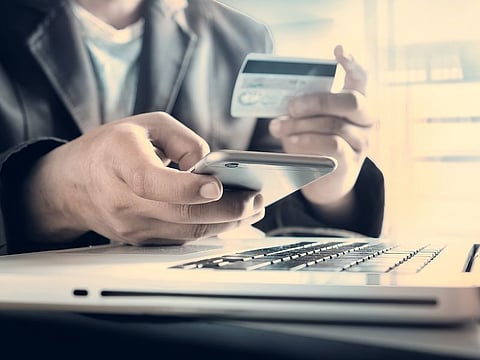How to protect credit cards from fraud and cybercrime
Oversharing, weak passwords, and device security lapses fuel modern financial scams

In today’s fast-paced digital economy, credit cards have become more than just a convenient payment method, they are an essential tool for online and offline transactions. While they provide unparalleled ease of use, they also bring with them a series of risks. Social exposure and cybersecurity threats are at the top of the list, with criminals finding increasingly sophisticated ways to exploit users. To enjoy the benefits of credit cards without falling victim to fraud, individuals must be aware of these risks and adopt proactive protection measures.
One of the most underestimated threats is social exposure. Many people unknowingly overshare information on social media platforms, messaging apps, or through casual emails. Even something as simple as posting a photo with part of a credit card visible can give fraudsters valuable data. Cybercriminals often use these small pieces of information to construct a bigger picture, enabling them to launch scams or identity theft attempts. Maintaining discretion and practicing caution in sharing financial information online is the first step toward safety.
Social engineering schemes
Closely linked to social exposure are social engineering schemes. Fraudsters use psychological manipulation to trick individuals into revealing sensitive details. They may pose as bank officials, tech support agents, or even friends in distress. These scams often arrive in the form of unsolicited messages, emails, or phone calls urging immediate action. Being sceptical of unverified requests and confirming through official channels can prevent a costly mistake.
As a rule, never share card details or one-time passwords (OTPs) with untrusted sources.
Beyond social risks, cybersecurity concerns form another critical layer. Cybercriminals deploy phishing websites, malware, and data breaches to gain unauthorised access to financial accounts. With the rise of e-commerce and mobile banking, attackers now have multiple digital entry points. Strong, unique passwords and two-factor authentication (2FA) remain the cornerstone defences. While simple, these steps create additional barriers that hackers must overcome, significantly lowering the risk of account compromise rather reducing hacker’s chance of success.
Device security
Another vital consideration is device security. Many individuals use smartphones and laptops for online transactions without realising these devices are potential attack targets. Outdated software, missing security patches, and unsecured Wi-Fi connections all create vulnerabilities. Regular updates, the use of Endpoint Protection (antivirus, antimalware) software, and avoiding public Wi-Fi for financial transactions can greatly reduce these risks. Treating your personal device as the “gateway” to your financial well-being is essential in today’s digital world.
Financial discipline also plays a key role in minimising risks. Regularly monitoring credit card statements and setting up real-time transaction alerts enable quick detection of suspicious activity. By doing so, users can take immediate corrective action, such as freezing a card or notifying their bank. Moreover, keeping credit utilisation below 30% of the limit not only safeguards financial health but also improves credit scores, strengthening long-term financial stability.
Managing credit limits
A practical strategy to reduce exposure is managing credit limits wisely. While having a high credit limit may seem advantageous, it can also increase the impact of a potential breach. Some consumers may benefit from maintaining lower, scalable credit limits, ensuring that if fraud occurs, the financial damage remains contained. This approach balances convenience with risk management, especially for those frequently engaging in online purchases.
It is also important to recognise the role of financial institutions. Banks and card issuers now provide advanced fraud detection systems, AI-driven monitoring, and customer-friendly tools like instant card freezing and replacement. Users should familiarise themselves with these services and actively use them to enhance their protection. Relying solely on the bank’s systems is not enough but consumer vigilance remains equally crucial.
Awareness and balance
Ultimately, the key to safe credit card usage lies in awareness and balance. A combination of strong cybersecurity habits, cautious social behaviour, and disciplined financial management provides a holistic defence. By staying updated on evolving fraud tactics and leveraging available security tools, individuals can continue to benefit from credit cards without becoming victims of fraudsters.
Credit cards are powerful financial tools, but they demand responsibility in usage. From avoiding oversharing online to securing devices and setting realistic credit limits, the measures are straightforward yet highly effective. With proactive vigilance, consumers can enjoy the convenience of credit cards while minimising exposure to cybercrime and social manipulation. Safety, after all, is not about avoiding technology but about using it wisely.
Anoop Paudval is Head of Information Security, and Governance Risk and Compliance, Gulf News
Sign up for the Daily Briefing
Get the latest news and updates straight to your inbox




